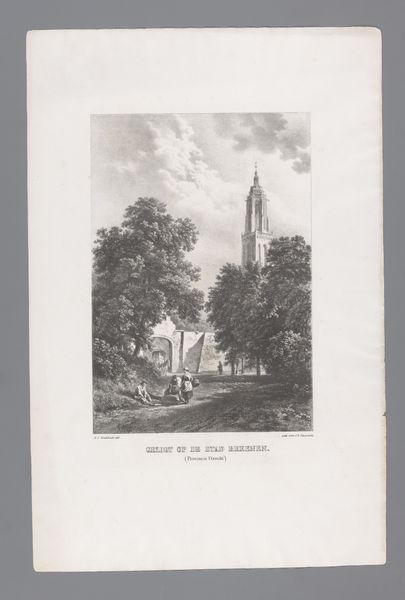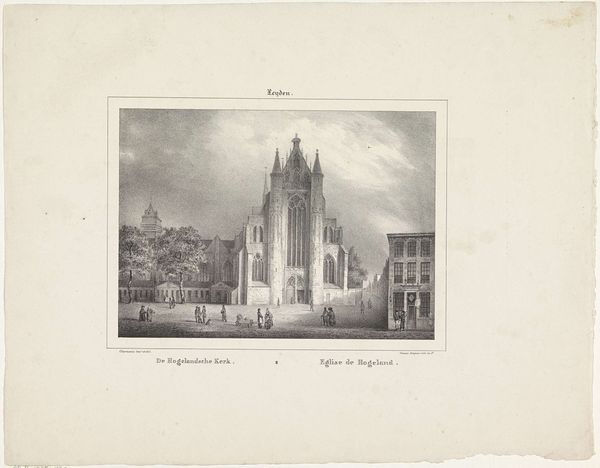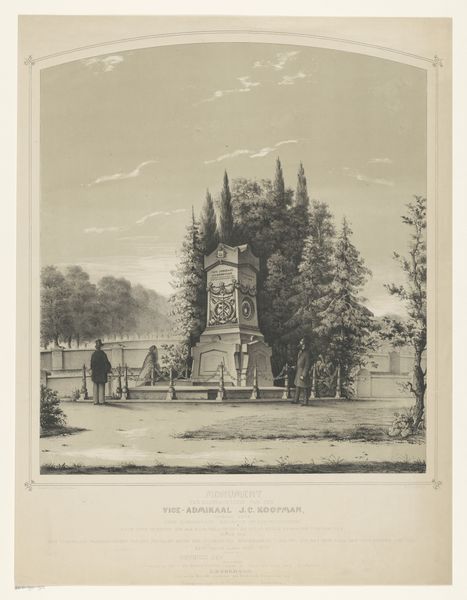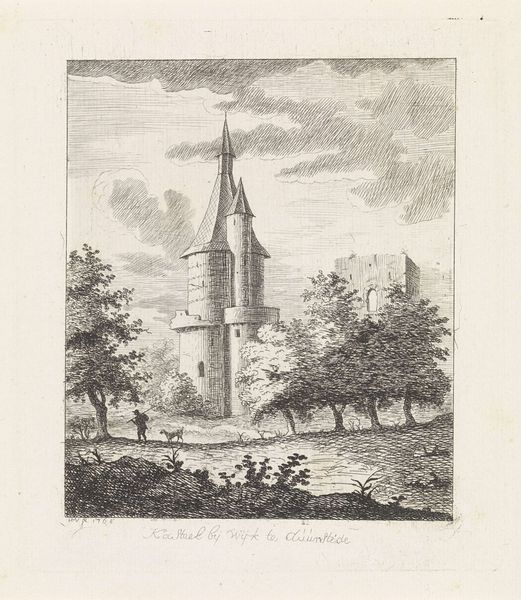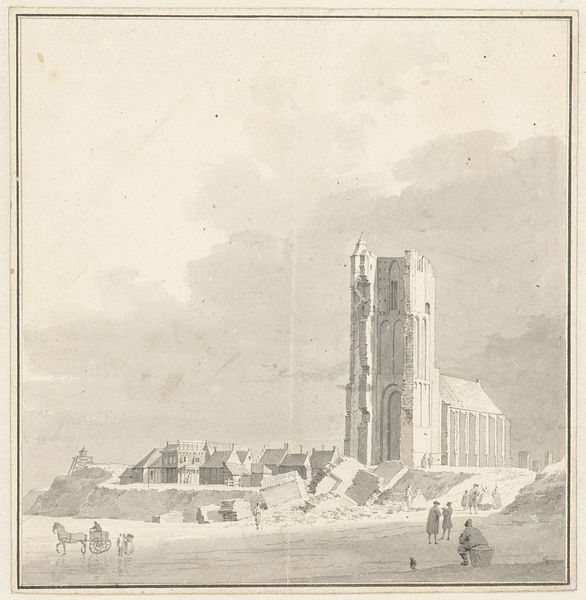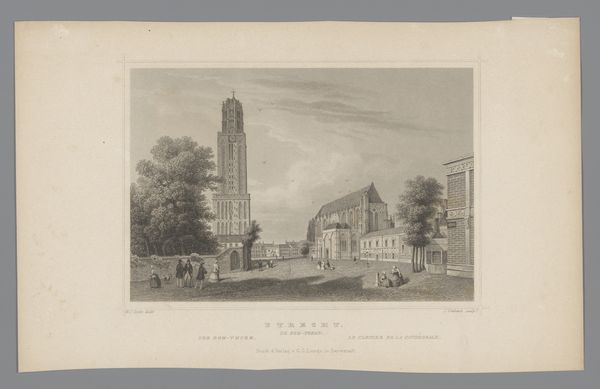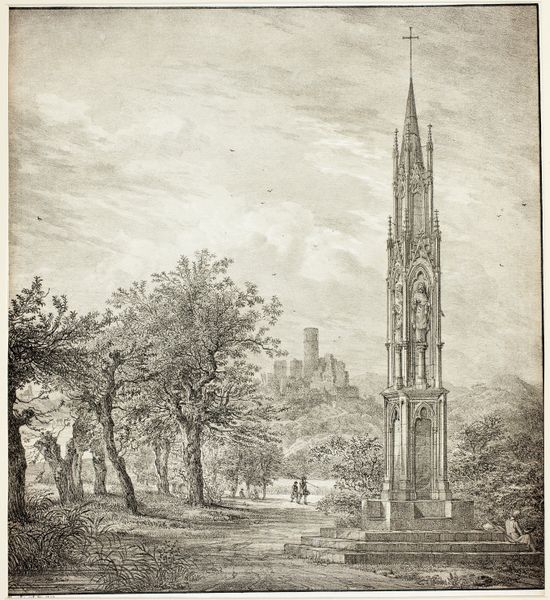
print, engraving
# print
#
landscape
#
romanticism
#
cityscape
#
engraving
#
realism
Dimensions: height 360 mm, width 265 mm
Copyright: Rijks Museum: Open Domain
Curator: Immediately, I'm struck by the almost photographic detail in this engraving; the water is incredibly serene, and that architectural spire—imposing, almost dominating. Editor: This is "View of the Oude Gracht in Utrecht," dating back to 1830, created by Reinier Craeyvanger. It is an engraving that belongs to the Romantic movement. But seeing it now, I am most drawn to how the architecture interacts with the natural elements— the trees, water—to define the landscape. Curator: The skyline indeed presents a striking contrast. The Oude Gracht was such an important feature in the lives of local Utrechters; how were women represented or unrepresented within its economic and social landscape? How did it function in women’s daily routines and power dynamics, for instance? We are given few cues from this print—or are we? Editor: I see that point; what might be deemed “quiescent,” though, also presents rich lines, shapes, and textures, the visual architecture that underlies the work's themes. Let’s consider the engraving itself; the medium reinforces the clean lines and sense of precise architectural record. The composition's emphasis on verticality with the cathedral—it is clearly about symbolic power. The clouds above contribute to that mood. The engraver’s decisions—how did those impact this print and reception to it? Curator: Certainly, we can engage how Craeyvanger’s formal decisions intersect the role of religion in the Netherlands and in Utrech specifically at the time; religious architecture carries so much weight during the time as the old ways are contested by growing ideas around humanism. How might locals respond to this print, especially regarding religious iconography in civic life? The people present seem quite small... Editor: But active, no? Not merely diminutive. Look at how they traverse the scene via water, and are scattered around town… It creates a pulse of activity and invites the viewer to witness a fleeting sense of bustling daily life of its local folk. Curator: A valid formal analysis. Thinking about its cultural impact, though, allows us to understand Romanticism's preoccupation with landscape as something politically potent, a negotiation of the sublime within a changing, contested public sphere. Editor: That’s fascinating, and in considering this engraving’s lines, shape, and use of shading, I better see this interpretation… Thanks to its details, we both gleaned richer insights on art, power, and place!
Comments
No comments
Be the first to comment and join the conversation on the ultimate creative platform.


